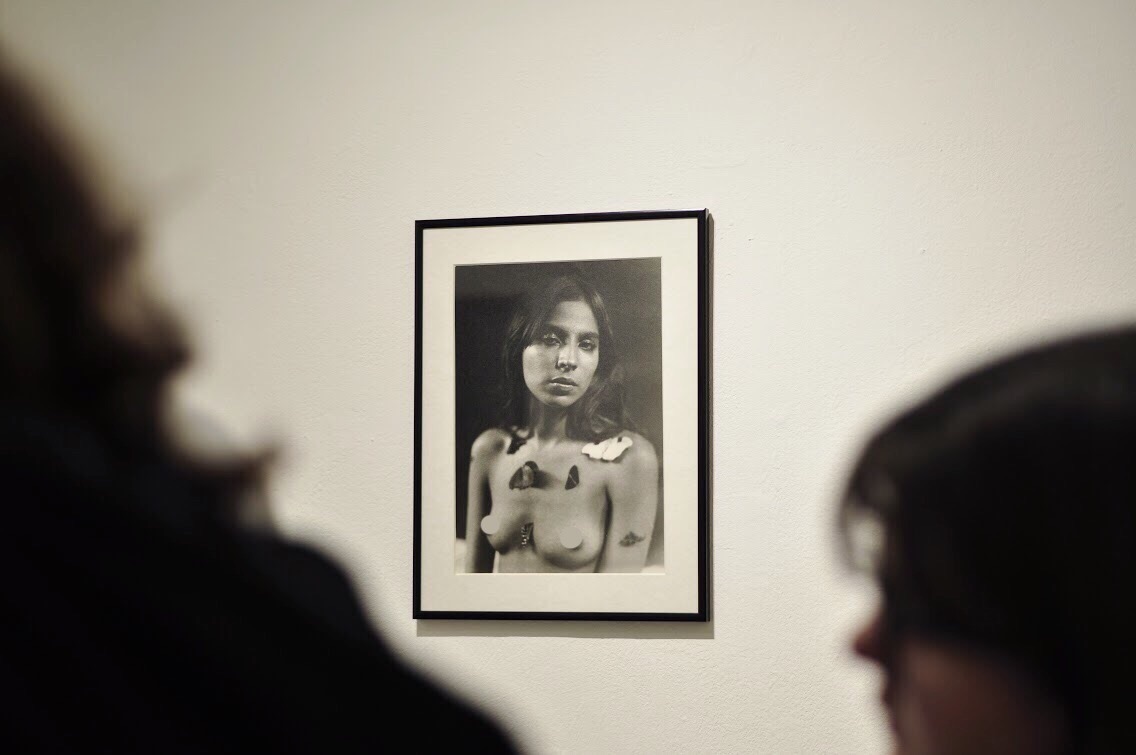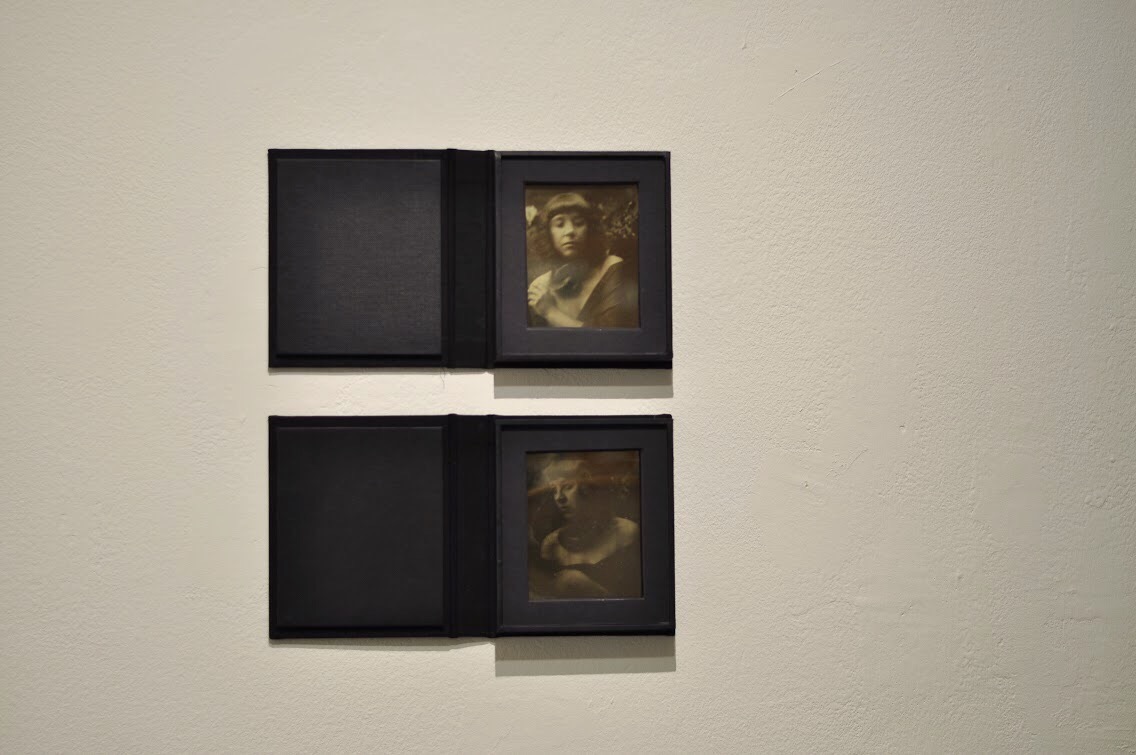
Tabata Roja’s art is full of erotism but with a plot twist: feminist perspective. It’s influenced by her family, childhood and experiences with female, empowering movement. But above all it is personal. So as our conversation.
Art of Prague: When your journey with photography has started?
Tabata Roja: I got quite interested in photography as a little kid but it actually started when I was 16 or 17 years old. My grandfather gave me his old camera and a bunch of films for Christmas but he barely told me how to use it. Additionally, I didn’t get along well with my parents. They are in Mexican army and by the time I was born, they were sent to pretty dangerous places and they weren’t able to take me with them. So I grew up with my grandmother. In that time I realised that I have memory problems. I couldn’t remember the faces of my parents that well so I started to be super attached to photos of my family. When my grandfather gave me his old camera I finally found a way to trust my memory.
My first approach was only the registration of my daily life like a visual diary so I could trust what I remembered, what I was living in that moment. Then I fell in love with a film. Actually I haven’t owned digital camera until 4-5 months ago. I prefer the process of developing and getting your pictures in a material way because digital lacks an essence from my point of view. I think that the process of development has a lot of to do with the process of memory. That’s why it becomes my way of reacting to reality and helped me to understand my own mental process.
How it transferred from capturing your memories to your current work and style?
I grew up in extremely strict catholic and politically right winged family. Then I realized that I’m a lesbian so it was pretty difficult for me to have a good development in my life – all the time they were telling me “this is the way a woman should be”, etc. I didn’t realize this influence until I was 21 years old.

Was strict family and discovering yourself the reason of the beginning of feminism’s influence in your life?
Yes. I’ve been raised in the environment of the heteronormativity. I could never relate to the representations of the women that media and pornography has showed. Moreover, the media representation of the women in Mexico is based on European standards. I was like “In Mexico we don’t like like that. What are you talking about?!” I could never meet my family’s expectations because I didn’t feel any of the standards natural for me. When I started to get involved with art I realized that majority of the female representation has been seen from the male point of view: women presented only as objects of contemplation but not as subjects with action. That made a switch in my way of thinking and truly see other women and see myself.
Then my friend took me to huge international feminist meeting called Encuentro internacional de mujeres que luchan organised by Las Zapatistas. Women there are emancipated from the government, from men and they live in a community. Year by year they call out the feminists and left movement girls for meeting focused on feminism. That event blew my mind. I have never been in a place where women are so free and empowered. That’s how feminisms came to my life.

I believe that’s the reason why you started to photograph nudity.
Exactly. It started when I lived with my grandmother and my uncle. The only thing which I’ve done in my childhood was watching movies and reading books because we lived in the middle of fucking nowhere [laughing] so I had no friends and I had no contact with other human beings – I only read books and watched movies. As I didn’t have contact with other kids that much, I wasn’t able to discover sexuality by contact with people in the same age. Then I found out that my uncle has a bookshelf with huge erotic section. I started to read it without my relatives realizing it. The first one was Lolita and I was like “What the fuck?!” Of course I didn’t understand that much but it was something that I carry on with me so many years. This patriarchal way of female erotism lead me to make so many bad decisions in my approach to sexuality. And also they weren’t any lesbian characters so I didn’t know what I was feeling. I was pretty confused.
But going back to photographing nudity: it’s like everything that we know is viewed from the patriarchal perspective so we don’t have any other references.
So you’d like to create new references…
Yes! I realized the lack of them and I told myself that it’s not the way I want to lead my sexuality. This is not the way I want to see our bodies representatives: like a piece of meat in the supermarket. I found it pretty disgusting. Actually that’s how I became to do erotic art in photography. I was also an exploration of my own body and my own sexuality through other values.

Talking about the approach to female body as the social issue: you probably know that a lot of Instagram accounts showing nude photography are regularly reported since female body is constantly sexualized. How do you manage to keep your account not banned?
I had a crazy ex boyfriend last year. I didn’t came out from the closet until this January [laughing]. When I was with him I had a lot of troubles in my social media because my followers weren’t the audience my pictures are for.
I’ve been involved in feminism for about 4-5 years but I didn’t go like super radical till last year. My previous account was banned. Then after break-up with this dude I had to make a public statement because he harassed me. In Mexico there are from seven to nine women killed by their ex partners per day. That’s why I was afraid about my life and I made the public statement about my situation. Then I re-opened my Instagram account. It’s very politically focused, mostly on feminism in Mexico. However, majority of my followers now are feminists and that’s why they don’t take down my account.
So audience is the key…
Yes. I have pretty supportive followers.
Another important aspect of your work is film photography. Why do you find it is so exciting?
First of all you cannot see the immediate result. Digital photography and also cell phones lead to not thinking what you’re doing. I also think I’m old school and methodic. I need to put an order for myself. The understanding how photography is a result of chemical and physical process is magical for me. You measure the light – shadow and light parts and you’re already thinking how you gonna develop that – in what temperature, in what time of developing. It’s quite beautiful process. You can take control of everything what is happening in your photography. Not only in aesthetic way but also in a technical way. I’m self-taught. I went to a few film schools but I didn’t feel comfortable in them because I don’t like the system. I quit three universities. Instead of it I found mentors with whom I worked on old methods. Now I do ferrotypes, cyanotypes, daguerreotypes.

I would like to ask you more about daguerreotype. It’s such a fascinating process!
It’s an amazing process indeed! The first time I made it, I cried. I cannot even express it in words.
Sounds like an amazing connection between art and science…
You feel like an alchemist! It’s not cheap and also hard to find but it’s really interesting process because the light measuring is different than in case of panchromatic film. For daguerreotype you don’t measure the whole light – you measure the UV radiation. Everything is handmade! The results are amazing – it’s my favourite method.
Another thing about the old methods is again the lack of references of women representatives away from patriarchal point of view in art history. All the techniques you see like paintings or sculpture – everything is only from male perspective. I’m trying to fill those historical void of references in different techniques.
Exhibition of Tabata Roja’s works in Life Is Ours Gallery till 9th of December 2018.

